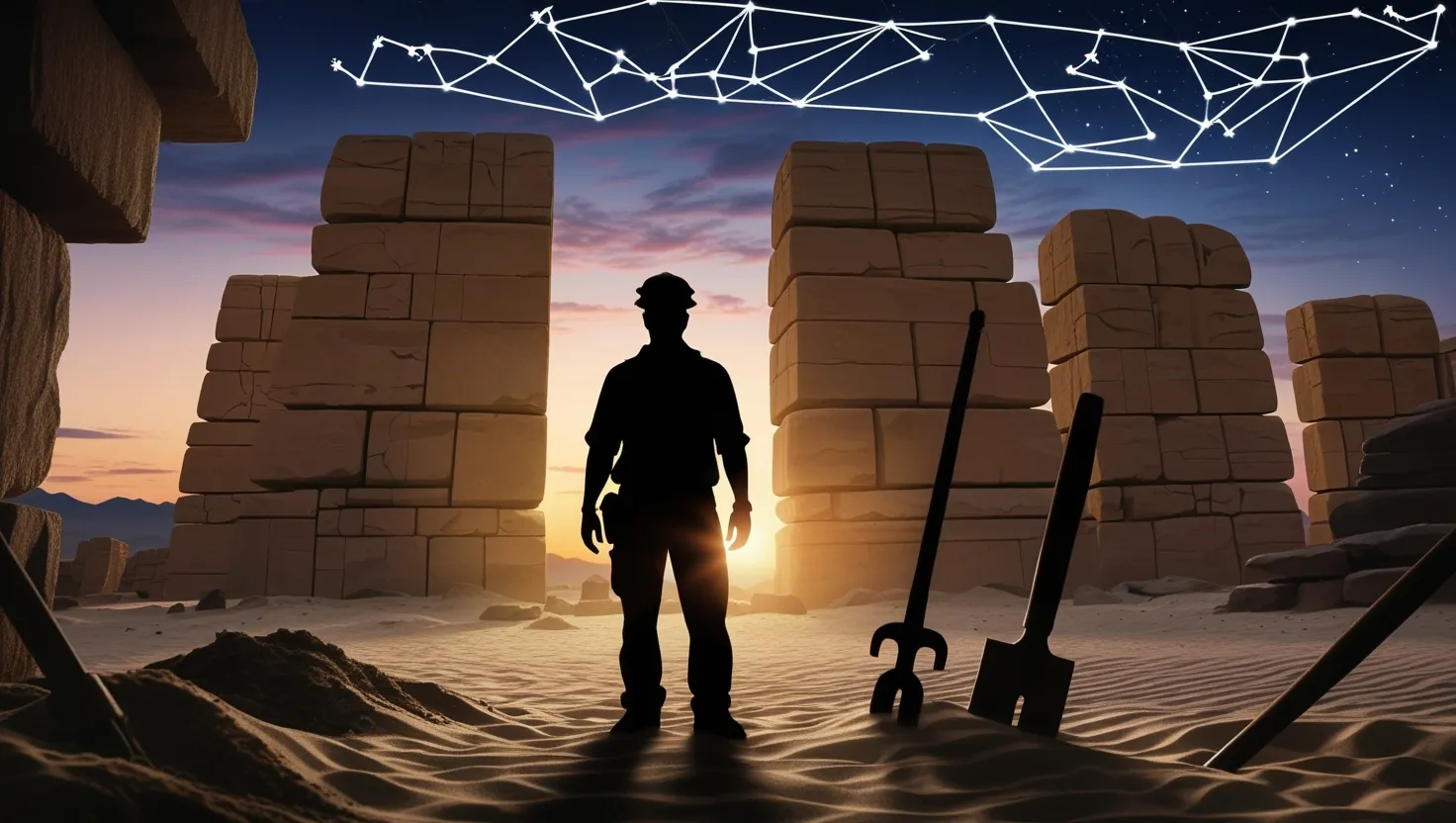The mystery of ancient civilizations and their technological achievements continues to captivate our imagination. Throughout history, societies have emerged, flourished, and then vanished, often leaving behind artifacts and structures that defy easy explanation. These remnants challenge our understanding of human development and technological progress. Let’s explore ten fascinating civilizations whose technological legacies raise profound questions about our past.
I often wonder how civilizations with supposedly “primitive” tools created works of such precision and scale. The gap between what we think they could do and what they actually accomplished forms one of history’s most persistent puzzles.
Vanished Innovators: Ancient Technologies That Challenge Modern Understanding
Have you ever stood before an ancient structure and thought, “How did they build this?” This question haunts archaeologists and engineers alike as they examine artifacts left by civilizations long gone.
The Antikythera Mechanism stands as perhaps the most startling example of advanced ancient technology. Discovered in a shipwreck off the Greek island of Antikythera, this 2,000-year-old device contains an intricate system of gears that predicted astronomical positions and eclipses with remarkable accuracy. The mechanical complexity wouldn’t be matched in Europe for another 1,500 years. The civilization that created this astronomical computer possessed mathematical and engineering knowledge far beyond what we typically attribute to ancient Greece. What’s particularly confusing is how this technological knowledge seemingly disappeared rather than progressing further.
“The greatest enemy of knowledge is not ignorance, it is the illusion of knowledge.” - Stephen Hawking
This quote perfectly captures our situation when examining these ancient marvels. Our assumptions about technological progress often blind us to evidence that contradicts our established timelines.
The creators of Göbekli Tepe in Turkey present another compelling mystery. Built around 9600 BCE, this site predates Stonehenge by 7,000 years and the invention of pottery, metallurgy, writing, and the wheel. Yet its builders somehow quarried, carved, and transported massive stone pillars weighing up to 20 tons, arranging them in precise circular patterns. The pillars feature intricate relief carvings of animals and abstract symbols. How did hunter-gatherers without metal tools or even pottery accomplish such feats? And why did they bury the entire complex deliberately after its construction?
Do you ever feel that our understanding of prehistoric peoples might be fundamentally flawed?
The Nazca culture of Peru created enormous geoglyphs (the Nazca Lines) that can only be properly viewed from the air. These massive drawings remain perfectly proportioned despite spanning hundreds of meters across desert plains. Their creation required sophisticated surveying and mapping techniques, yet the Nazca had no flying machines to view their completed work. Some designs appear to incorporate astronomical alignments, suggesting advanced observational astronomy. The precision of these vast images, created between 500 BCE and 500 CE, implies capabilities we struggle to explain through conventional historical knowledge.
The Baghdad Battery represents another technological anomaly. Dating to the Parthian period (250 BCE to 224 CE), these clay jars containing copper cylinders and iron rods appear capable of generating an electric current when filled with an acidic solution. Discovered in Iraq, these devices predate Alessandro Volta’s battery by over 1,500 years. If their purpose was indeed electrical, what were they powering? And why did this technology not spread or develop further? The apparent understanding of electrochemical principles so far in the past challenges our timeline of scientific discovery.
“We build too many walls and not enough bridges.” - Isaac Newton
Easter Island’s Moai statues have fascinated researchers for generations. These massive stone figures, some weighing up to 86 tons, were carved in quarries and then somehow transported up to 11 miles across rugged terrain. The small population of the island, limited resources, and absence of wheels or large animals make this achievement particularly difficult to explain. Various theories propose the use of wooden sledges, rollers, or rocking the statues forward (“walking” them), but no consensus exists. The civilization that accomplished this feat eventually collapsed due to environmental degradation, leaving behind only their silent stone sentinels.
Have you considered how often we might underestimate the ingenuity of ancient peoples simply because their methods differ from our own?
At Puma Punku in Bolivia, part of the Tiwanaku site, we find stonework of such precision that it challenges explanation. Massive granite blocks weighing up to 800 tons were cut with perfect right angles, drilled with perfectly straight holes, and fitted together with such precision that not even a razor blade can fit between them. The material is one of the hardest stones to work with, yet the cuts appear machine-perfect. How did a pre-Inca civilization achieve this without modern tools? The technical skill displayed at Puma Punku would challenge even contemporary stonemasons using advanced equipment.
The Longyou Caves in China present another extraordinary engineering achievement. Discovered only in 1992, these massive artificial caverns were carved out of solid siltstone, removing nearly one million cubic meters of rock. The walls feature perfectly straight lines of chisel marks and maintain remarkably consistent patterns throughout. No historical records mention their construction or purpose, despite the enormous labor required to create them. The technical consistency throughout the caves suggests sophisticated planning and execution by a well-organized workforce—whose identity remains unknown.
“The farther backward you can look, the farther forward you are likely to see.” - Winston Churchill
I find this particularly relevant when examining these ancient sites. By understanding the capabilities of past civilizations, we gain perspective on human potential that might inform our future.
The fortress of Sacsayhuamán near Cusco, Peru, features massive limestone blocks fitted together without mortar, some weighing over 100 tons. The precision of these irregularly shaped blocks is so extreme that modern replicas would require advanced computer modeling to achieve. The seams between stones are so tight that not even a sheet of paper can be inserted. Spanish conquistadors believed such work impossible for the “primitive” Inca and attributed it to demons. While conventional archaeology credits the Inca, some evidence suggests the site may be much older. How these enormous stones were cut, transported uphill, and fitted with such precision remains contentious.
What technological knowledge might have been lost during the Spanish conquest, never to be recorded in written history?
The perfectly spherical stone balls of Costa Rica present another mystery. Created between 200 BCE and 1500 CE, these granite spheres range from a few centimeters to over 2 meters in diameter, with the largest weighing 16 tons. Their perfect roundness would be challenging to achieve even with modern tools, yet ancient craftsmen created them using stone implements. The mathematical knowledge required to maintain perfect sphericity while gradually reducing the mass of a multi-ton stone block implies sophisticated geometric understanding. Most puzzling is their purpose—arranged in precise alignments, they may have served astronomical or navigational functions now lost to time.
The underground city of Derinkuyu in Turkey represents an engineering marvel that accommodated up to 20,000 people. Extending 18 stories below ground, this massive complex includes living quarters, stables, wells, ventilation shafts, and defensive mechanisms. Its ventilation system maintained fresh air at all levels without modern pumping technology. The precision of its construction and the advanced understanding of air circulation principles speak to sophisticated engineering knowledge. Built between the 7th and 8th centuries BCE, its existence was forgotten until accidentally rediscovered in 1963. How did its builders achieve such environmental control deep underground without modern science?
“The past is a foreign country; they do things differently there.” - L.P. Hartley
This sentiment perfectly captures our struggle to understand these ancient technologies. We often project our modern limitations onto the past, finding it difficult to accept that earlier societies might have developed different but equally effective methods to solve complex problems.
These ten vanished civilizations and their technological achievements force us to question conventional historical narratives. The disconnect between their apparent capabilities and our understanding of technological development creates a fascinating paradox. Several possibilities emerge: these societies possessed knowledge we’ve yet to rediscover; technologies developed, were lost, and had to be reinvented; or they employed fundamentally different approaches that achieved similar results to our modern methods.
Looking at these examples collectively, patterns emerge. Many show extraordinary precision in stonework, advanced astronomical knowledge, and sophisticated understanding of mathematics and engineering principles. Yet in almost every case, these technologies appear somewhat isolated—advanced in specific domains while other technologies remained basic by comparison.
Do these technological anomalies suggest that human progress isn’t always linear? Could knowledge be gained, lost, and rediscovered throughout our history?
I believe these examples should humble us. They remind us that our ancestors were not simple or primitive but capable of remarkable achievements through paths different from our own. Their solutions to complex problems might inform our future challenges if we approach them with open minds.
The next time you encounter an ancient structure or artifact of puzzling sophistication, consider not just how it was made, but what it tells us about human potential. Perhaps the greatest technology these vanished civilizations left behind isn’t found in their stone monuments or mechanical devices, but in the questions they continue to ask us across the centuries—questions that might yet lead to discoveries we haven’t imagined.






